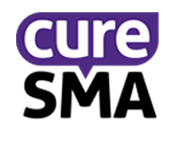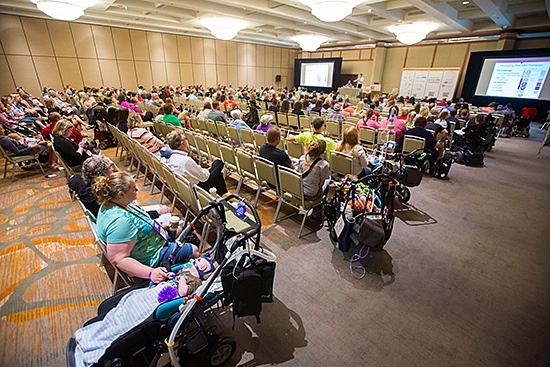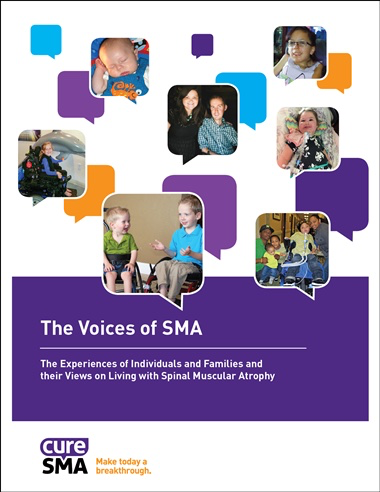Cure SMA Kicks Off 2016 Conference, Releases SMA-FDA Interaction Update
Written by |

 Cure SMA, a non-profit organization dedicated in large part to funding research for the treatment and cure of spinal muscular atrophy, reports that its drug development pipeline has grown dramatically over the past decade.
Cure SMA, a non-profit organization dedicated in large part to funding research for the treatment and cure of spinal muscular atrophy, reports that its drug development pipeline has grown dramatically over the past decade.
Of 18 programs currently in the pipeline, six are in clinical trials, several of them in Phase 2 and Phase 3 stages.
2016 Update on SMA-FDA Interactions
In its 2016 Update on SMA-FDA Interactions, Cure SMA describes how the U.S. Food and Drug Administration (FDA) evaluates a drug for approval – the many different factors such as the quantity and qualities of evidence supporting a treatment; safety and effectiveness; the potential benefits of a treatment versus potential risks; and expected long-run outcomes.
Cure SMA stresses the crucial importance of the SMA community in building and maintaining strong relationships with the FDA and other regulatory bodies to ensure that the voice of the patient community is heard during the vetting of developmental drugs for approval.
The goal of the meetings is to further expand the FDA’s understanding of patient community priorities pertaining to drug development.
Cure SMA reports that the most recent round of FDA meetings enabled patients to voice opinions and assessments regarding the most important and most burdensome impact SMA has on patients and families. They also shared perspectives about what could bring meaningful change in the daily lives of SMA patients and what overall impact an approved treatment could have on patients and loved ones.
Cure SMA maintains that reaching and achieving FDA approval of one or more of the drugs currently in the pipeline will mark milestones on the road to finding effective treatment and ultimately a cure for the disease. Considering the organization’s strategy of pursuing several different therapeutic avenues at once, the group could leap several hurdles, seemingly all at once.
2016 Annual SMA Conference
The 2016 Annual SMA Conference June 16-19 in Anaheim, Calif., will bring researchers and SMA patients and their families together for two informative sections that will include a moderated discussion on the FDA’s new drug application process, and another on SMA drugs in clinical development.
Cure SMA hosts the Annual SMA Conference, sponsored this year by biotechnology firm Biogen, as a forum that allows the SMA community to lend each other support while learning about the latest research and care advances.
The conference weekend promises a broad array of offerings that range from first-hand, very scientific data provided by researchers, to a family oriented pajama party and movie night.
The two family-centered and research-focused conventions will run concurrently, bringing together researchers, healthcare professionals, and families to network, learn, and collaborate at the largest SMA gathering in the world.

Workshops, keynote sessions with leading researchers, family-friendly research poster session, teen and adult social activities are among many opportunities to connect and interact with other SMA families and to receive information from scientists working in the field.
The Cure SMA FDA Engagement Initiative
For Cure SMA’s FDA Engagement Initiative, organization representatives met regularly with the FDA and other patient groups to discuss individual perspectives and emphasize the importance of patient input on the drug development approval process. The meetings were made possible in part by the FDA’s Prescription Drug User Fee Act (PDUFA) and the Patient-Focused Drug Development Initiative (PFDD).
What is PFDD and PDUFA?
Every five years, Congress renews the Prescription Drug User Fee Act (PDUFA) — the statute that authorizes the agency to collect fees from drug manufacturers in order to fund the new drug approval process and related functions. When reauthorized in 2012, in the current version known as PDUFA V, stronger emphasis was placed on patient input. Regulatory guidance resulted in the Patient-Focused Drug Development (PFDD) Initiative, tasked with systematically gathering of SMA patients’ perspectives on their condition and available therapies for treatment.
As part of this commitment, FDA was to hold at least 20 public meetings; each focused on a specific disease area. In late 2014, Cure SMA submitted a formal request for a meetings. If selected, a PFDD meeting for SMA would provide another avenue for the patient community to impact SMA drug development.
Voices of SMA Heard
 Late last year, Cure SMA created The Voices of SMA booklet to serve as a tool for helping educate FDA staff. Tapping dozens of first-hand perspectives from the SMA community, the booklet describes drug development priorities, SMA’s impact on the daily lives of patients and families, hopeful progress for patients, and the SMA community’s preferences and expectations for better treatment.
Late last year, Cure SMA created The Voices of SMA booklet to serve as a tool for helping educate FDA staff. Tapping dozens of first-hand perspectives from the SMA community, the booklet describes drug development priorities, SMA’s impact on the daily lives of patients and families, hopeful progress for patients, and the SMA community’s preferences and expectations for better treatment.
Cure SMA credited the success of the booklet to unprecedented participation during the group’s 2015 August Awareness month – public participation and consciousness-raising turned the turnout into action.
Cure SMA collected patient stories as meaningful tools for carrying patient messages directly to FDA leaders and Congressional representatives so that they could be of considered in discussions and decision-making.
 The booklets, which Cure SMA says were “enthusiastically received” by FDA leaders, will have an impact on decision makers when an SMA drug is brought forward during review and approval processes.
The booklets, which Cure SMA says were “enthusiastically received” by FDA leaders, will have an impact on decision makers when an SMA drug is brought forward during review and approval processes.
According to Cure SMA’s website, Dr. Janet Woodcock, Director of the FDA’s Center for Drug Evaluation and Research, thanked the organization of the booklet: “We have to salute the courage of the families dealing with this terrible condition they are continuing to fight! We have heard from other patient groups, who have serious debilitating illnesses, that improvements that would be small in a healthy person can be extremely meaningful if one’s function is severely compromised.”
Cure SMA’s Role in PDUFA Reauthorization
Cure SMA began working with the FDA and other concerned groups at the end of 2015 for the Sept. 2017 reauthorization of the statute. The FDA continued to hold monthly meetings to discuss ways the drug review process can be improved. Wrapped up in March, the meetings were used to form understanding between the FDA and the industry. Reauthorization will come before Congress in fall of 2016.
Cure SMA was an active participant in the six PDUFA reauthorization meetings, with its representatives providing testimony before FDA at the December meeting to highlight the importance of patient-centered drug development and to restate the SMA community’s priorities for incorporating the patient voice through all drug development and approval stages.
Recent Successes for Cure SMA
• Cure SMA’s 5th Annual Hope on the Hill Congressional Dinner on Dec. 1, 2015 attracted guests that included Speaker of the House Paul Ryan and Congressmen Sean Duffy, Richard Hudson, Bill Huizenga, Erik Paulsen, David Schweikert, and Greg Walden.
• Groups composed of SMA community families and organizations were formed to create an initiative to better participate in all government and drug industry decision-making processes. Nearly 100 people participated in the initiative, including persons with SMA, parents, and clinical experts. Results highlighted many difficulties of living with SMA that range from the long process of reaching diagnosis to the psychosocial of coping with SMA day-to-day.
• Two comprehensive parent surveys: one of parents whose children have participated in a clinical trial, and one of parents whose children have not. The Parent Project Muscular Dystrophy (PPMD) partnered with Cure SMA for the surveys.
The survey focused on motivations, hopes, and communications experienced by 53 parents whose children participated in SMA related clinical trials during the past decade.
Parents whose children had not been part of clinical trials took the second survey. The 222 parents revealed reasons why they chose not to, or were unable to pursue clinical trial involvement. The Parent Project Muscular Dystrophy (PPMD) partnered with Cure SMA on the two parent surveys.






